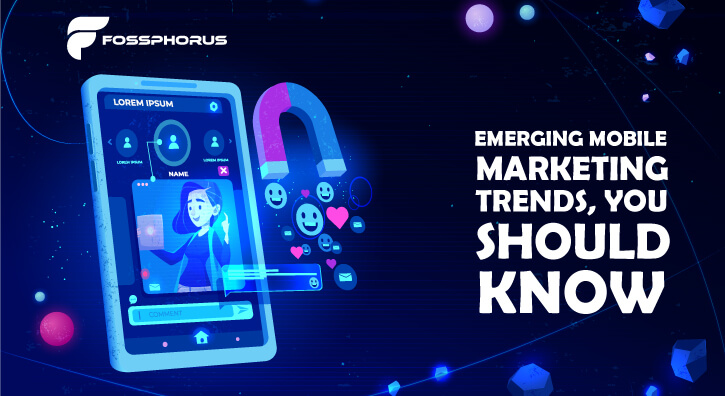BLOG Detail
Building Brands That Stand Out: Brand Strategy Advice from Specialists
04 October 2024
06:24 AM

In today's crowded marketplace, merely having a good product or service isn't enough to make you stand out. To truly differentiate, companies must focus on building a memorable brand that creates an emotional connection with customers. And This is only possible with a smart brand strategy.
Yes, you read that right!
Cohesive brand strategies serve as the foundation for shaping perception, guiding marketing, and ultimately driving growth. Businesses that put in their hard work to define core brand identity reap the rewards of increased trust, affinity, and lifetime value.
Better yet, With the help of a proactive, strategic approach to brand building, businesses can differentiate from competitors, become category leaders, and build brands that stand the test of time.
The question here is what goes into successful branding strategy? Confusing?
Keep reading… in this blog post, you will see insights from veterans in the branding world on how to craft brands that pop.
From nailing down your core identity and values from the start to selecting brand elements that reinforce who you are, to executing a cohesive brand experience across channels - we will break down the key pillars of brand strategy.
Let’s get started!
How to Build a Brand Strategy?
Whether you want to revitalize a current brand or create a new one from scratch, you must build a distinct brand strategy.
With an effective brand strategy, you can earn mindshare and stand out from competitors. Let's explore how to build brands that connect, communicate, and convert.
1. Define Your Audience
Getting clear on who your targeted customers are serves as the foundation for any impactful strategy. All you need to do is take the time out to conduct in-depth research while understanding your customer's psychographics, demographics, behavior, needs, and motivations.
After that develop detailed buyer personas that capture the true essence of your audience segments. By the way, you can use surveys, focus groups, interviews, and data analysis to gain meaningful consumer insights that allow you to "get in the shoes" of your audience.
By intimately understanding your existing and potential customers, you can craft an authentic brand that resonates with your audience.
2. Analyze the Competitive Landscape
Don’t hesitate and take a deep dive into understanding the brand positioning and strategies of your competitors. Carefully, assess their brand identities, messaging, product offerings, and marketing communications.
Identify gaps in the competitive landscape to uncover strategic white space opportunities where you can position your differentiators and stand out. However, this analysis would help you identify your brand’s unique value proposition. Moreover, it is vital to Know the competitor set so you can develop a distinct brand strategy that rises above the noise.
3. Establish Your Brand Identity
You must clarify what your brand stands for at its core by defining your values, purpose, vision, mission, and differentiators. However, this understanding about your brand, or probably you can say who you are and what makes you unique will inform your identity.
While crafting strategy, make sure your brand identity captures your authentic attributes and remains consistent across touchpoints. A clear brand identity serves as the heart of your strategy.
4. Craft Your Brand Positioning
Remember, the brand positioning statement summarizes what makes you distinct in the competitive landscape. It should articulate your target audience, frame your brand benefits and differentiators, and convey your personality.
This core statement will inform all aspects of your strategy - Besides, draft and refine it to pinpoint the unique value your brand delivers so you can own strategic mindshare.
5. Determine Your Brand Personality
Determining the personality and voice you want your business to have is an important part of brand strategy. What human personality qualities and values do you want your brand to be associated with? Examine terms and attributes that are relevant to your target audience and express the required tone.
Consider the language, syntax, and style that would be appealing to your customers. Consistently communicate this established personality through your messaging, visual identity, advertising, and consumer encounters. A distinct, real personality aids in the formation of emotional ties with your audience.
6. Inform Your Visual Identity
Let your brand's visual identity be guided by its primary brand strategy. The logo, color palette, typography, photography, and other design components should all work together to reinforce your desired brand image and positioning.
Instead of haphazard decisions, make deliberate choices that are in line with your personality and voice. Consistent images that match your brand identity aid in imprinting your brand in the thoughts of buyers. Remember, when effectively coordinated, your visual identity is an important touchpoint that can improve brand recognition and affinity.
7. Align Your Messaging
Well, it is a very impactful component of your strategy - crafting unified messaging aligned to your positioning. Develop a messaging framework that establishes your brand narratives, proof points, tone, and cadence.
After that, determine the key messages you want to convey to your audience consistently across channels and campaigns. Get stakeholder alignment on messaging to maintain brand coherence. Unified, strategic messaging reinforces what your brand stands for in every customer interaction.
8. Execute a Cohesive Brand Experience
Even this is pretty important…
You need to bring your brand strategy to life by executing a unified brand experience at every touchpoint. Audit customer interactions and ensure they consistently reflect your desired brand image - from your website to product packaging to sales processes and beyond.
Remove experiences that are fragmentary or incongruent. Consistency builds familiarity and trust. A well-planned end-to-end experience that is linked to your core strategy can boost brand affinity and loyalty.
9. Secure Internal Buy-In
Failure to get full organizational buy-in for your brand strategy is a common problem. Make an early attempt to educate internal teams on the strategy and unite leaders and staff behind common brand goals. This shared knowledge helps to reduce fragmented, off-brand actions.
Moreover, develop brand ambassadors within the organization because Internal adoption is critical to ensuring consistent exterior implementation. Keep in mind, that a critical component of strategy is achieving wide corporate alignment.
10. Continuously Monitor and Refine
Developing strategies is not a one-time event. You need to set checkpoints to analyze your brand's performance against goals and KPIs regularly.
Plus, you must track indicators such as brand awareness, loyalty, and consideration. Solicit feedback from customers via surveys and focus groups to uncover altering requirements and attitudes.
Besides, to remain relevant, be prepared to refine the components of your plan. While brand continuity is essential, brands must also develop in response to market demands.
Final Thoughts
Developing a unified brand strategy takes time and work up front, but it pays off in the long run. With the information in this post, you can create a plan focused on knowing your audience, providing differentiated value, and promoting your brand at every touchpoint.
Strategy acts as a north star, unifying decisions and directing your path to growth when it is founded on consumer data and orchestrated across the customer experience. It serves as the foundation for emotionally connecting with customers, standing out from the crowd, and ultimately developing brand advocates.
But if you still need help with building brand strategies – Fossphorus has the skills.




